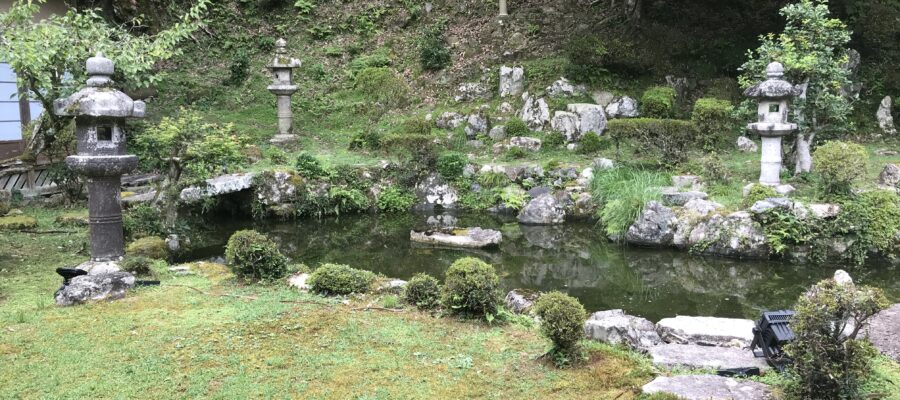国の重要文化財に指定されている本堂に入って行きました。スリッパの数が足りていないので、靴下のまま上がることにしました。ご本尊は阿弥陀如来で、平安時代の作品だそうです。写真を撮っていませんが、いただいたパンフレットの写真を見ると、恰幅の良いふくよかなお姿の阿弥陀様です。いかにも平安時代らしいお顔です。
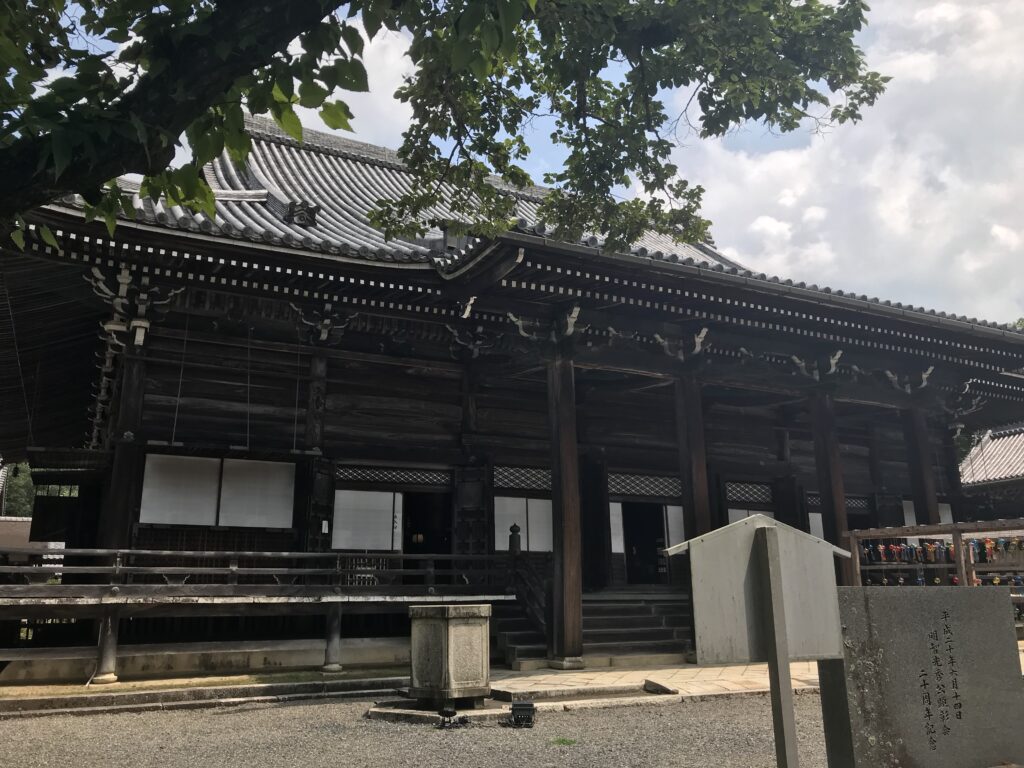
本堂を見学した後、客殿を見て回りました。こちらも国の重要文化財に指定されています。話によると、この建物は豊臣秀吉の建てた伏見城にあった建物を、こちらに移築したそうです。長い年月が経ったせいか、描かれた襖絵などもかなり薄くなっています。
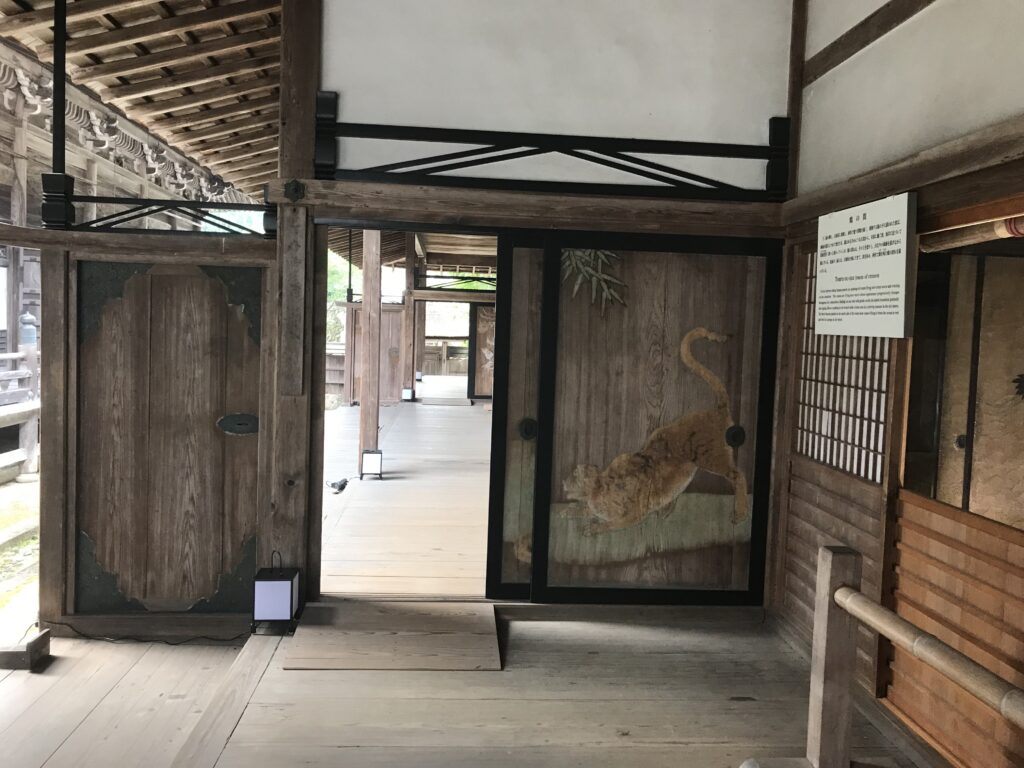
この客殿には庭園があり、小堀遠州の作庭と伝わっています。裏山の急傾斜の部分を巧みに利用して、丸刈り、角刈りの小刈り込みを駆使した観賞用庭園とパンプレットには説明されています。この池の形も琵琶湖の姿を取り入れた瓢型をしています。落ち着いた雰囲気の中、しっとりした感じがする庭園でした。
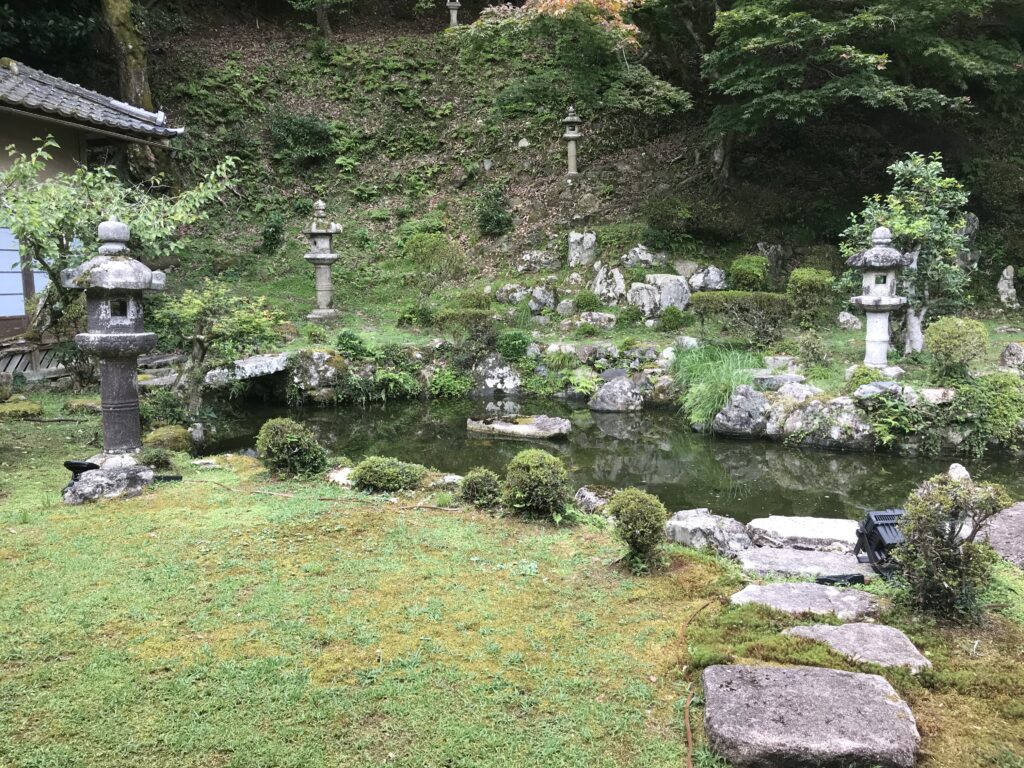
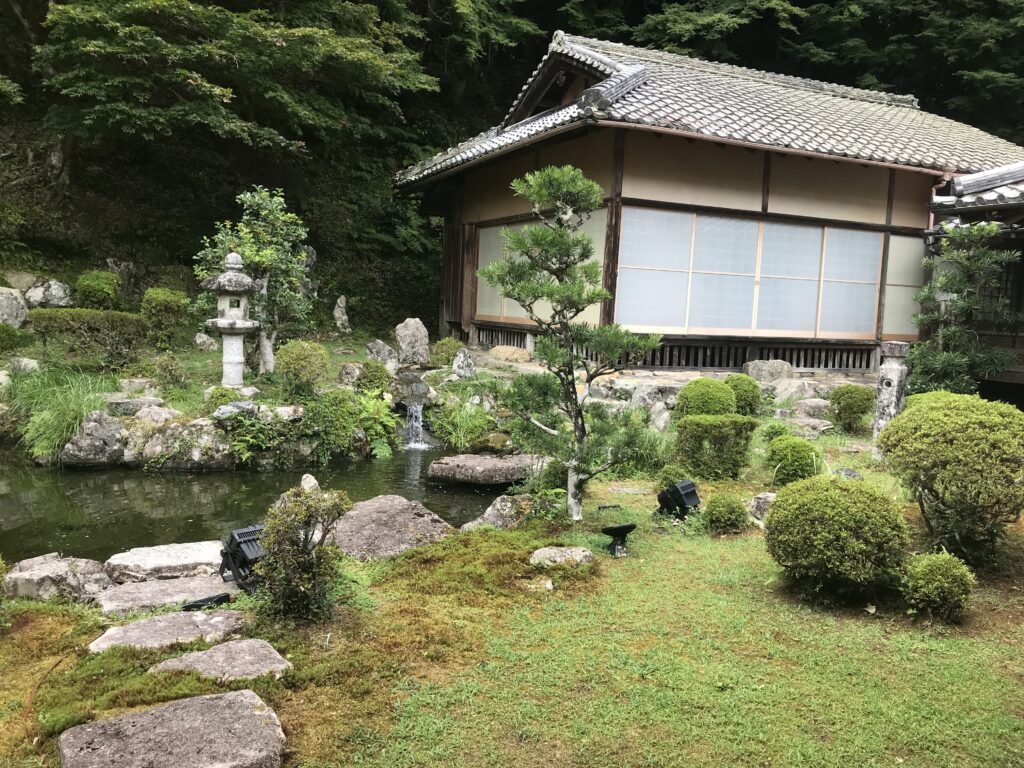
庭園はこれだけでは終わりません。さらに連なった建物の中を歩いていくと、次には「穴太衆庭園」と呼ばれる枯山水の庭園が出てきました。夏の新緑のあり、目に優しい景色を作り出していました。そして、平成元年に作庭された裏書院庭園では、小さいながらも池泉鑑賞式の庭園を見ることができました。こちらでは老夫婦が縁側に腰を下ろしてゆっくりと庭を鑑賞していました。
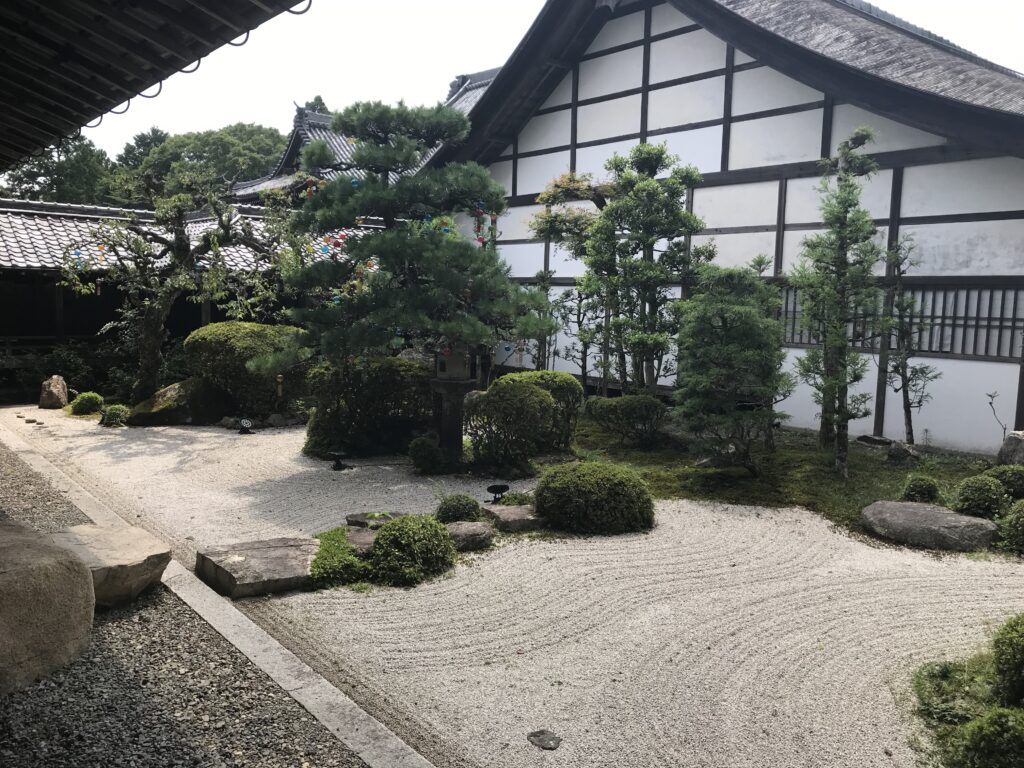

気温が高いためか、スマホの電池の減りが異常に速く、本日訪問予定の1カ所目にて、すでに残りの電池の量が、65%程度になってしまいました。まだまだ写真を撮りたいのですが、あまり撮りすぎると、電池がなくなってしまうので、撮影を終えて、次の場所へ向かうことにしました。(完)
滋賀県のお土産
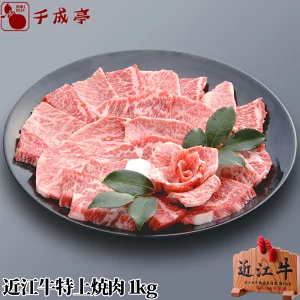
「近江牛 特上焼肉 1kg」 ギフト プレゼント 御祝 内祝 お返し
価格:10,800円
(2022/8/10 13:52時点)
感想(22件)
Saikyoji Temple (2) (Sakamoto, Shiga Prefecture)
I entered the main hall, which was designated as a national important cultural property. As there were not enough slippers, I decided to go up in my socks. The principal image was Amida Nyorai, and it is said to be a work from the Heian period (794-1185). I did not take a picture of the Amida Nyorai, but the picture in the pamphlet I received shows that the Amida Nyorai is a well-dressed, plump figure. His face is very Heian period.
After visiting the main hall, I went to the guest hall. This building was also designated as a national important cultural property. According to the story, this building was originally built in Fushimi Castle by Hideyoshi Toyotomi and moved here. Perhaps because of the long passage of time, the paintings on the sliding doors and other fusuma-e (sliding door paintings) have faded considerably.
The guest house has a garden, which is said to have been created by Enshu Kobori. The pamphlet describes the garden as an ornamental garden that skillfully utilizes the steep slope of the hill at the back of the building and makes full use of small round and square mowings. The shape of this pond is also gourd-shaped, incorporating the shape of Lake Biwa. The garden had a calm and serene atmosphere.
The garden does not end here. Walking through a further series of buildings, I next came to a dry landscape garden called “Anoushu Garden”. There was fresh greenery in the summer, creating a view that was easy on the eyes. Then, at the Ura-shoin Garden, which was created in 1989, we saw a small garden with a pond fountain appreciation style. Here, an elderly couple was sitting on the porch and enjoying the garden.
Perhaps because of the high temperature, the battery of my smartphone was running down unusually fast, and at the first place I planned to visit today, the remaining battery power was already at about 65%. I still wanted to take more pictures, but if I took too many, my battery would run out, so I decided to finish taking pictures and head to the next location. (End)
Temple Saikyoji (2) (Sakamoto, préfecture de Shiga)
Je suis entré dans le hall principal, qui a été désigné comme un bien culturel d’importance nationale. Comme il n’y avait pas assez de chaussons, j’ai décidé de monter avec mes chaussettes. L’image principale était Amida Nyorai, et on dit que c’est une œuvre de la période Heian (794-1185). Je n’ai pas pris de photo de l’Amida Nyorai, mais la photo figurant dans la brochure que j’ai reçue montre que l’Amida Nyorai est une figure ronde et bien habillée. Son visage est très caractéristique de la période Heian.
Après avoir visité le hall principal, je me suis rendu dans le hall des invités. Ce bâtiment a également été désigné comme un bien culturel d’importance nationale. Selon l’histoire, ce bâtiment a été construit à l’origine dans le château de Fushimi par Hideyoshi Toyotomi et déplacé ici. Peut-être en raison du long passage du temps, les peintures sur les portes coulissantes et autres fusuma-e (peintures de portes coulissantes) ont considérablement pâli.
La maison d’hôtes possède un jardin, qui aurait été créé par Enshu Kobori. La brochure décrit le jardin comme un jardin d’ornement qui utilise habilement la pente raide de la colline à l’arrière du bâtiment et tire pleinement parti des petites tontes rondes et carrées. La forme de ce bassin est également en forme de gourde, reprenant la forme du lac Biwa. Le jardin dégageait une atmosphère calme et sereine.
Le jardin ne s’arrête pas là. En traversant une autre série de bâtiments, je suis ensuite arrivé à un jardin paysager sec appelé “Jardin Anoushu”. Il y avait de la verdure fraîche en été, créant une vue agréable pour les yeux. Ensuite, au jardin Ura-shoin, qui a été créé en 1989, nous avons vu un petit jardin avec un style d’appréciation de fontaine d’étang. Ici, un couple de personnes âgées était assis sur le porche et profitait du jardin.
Peut-être à cause de la température élevée, la batterie de mon smartphone se déchargeait anormalement vite, et au premier endroit que j’avais prévu de visiter aujourd’hui, la batterie restante était déjà à environ 65 %. J’avais encore envie de prendre d’autres photos, mais si j’en prenais trop, ma batterie se viderait, j’ai donc décidé de finir de prendre des photos et de me rendre au prochain endroit. (Fin)
